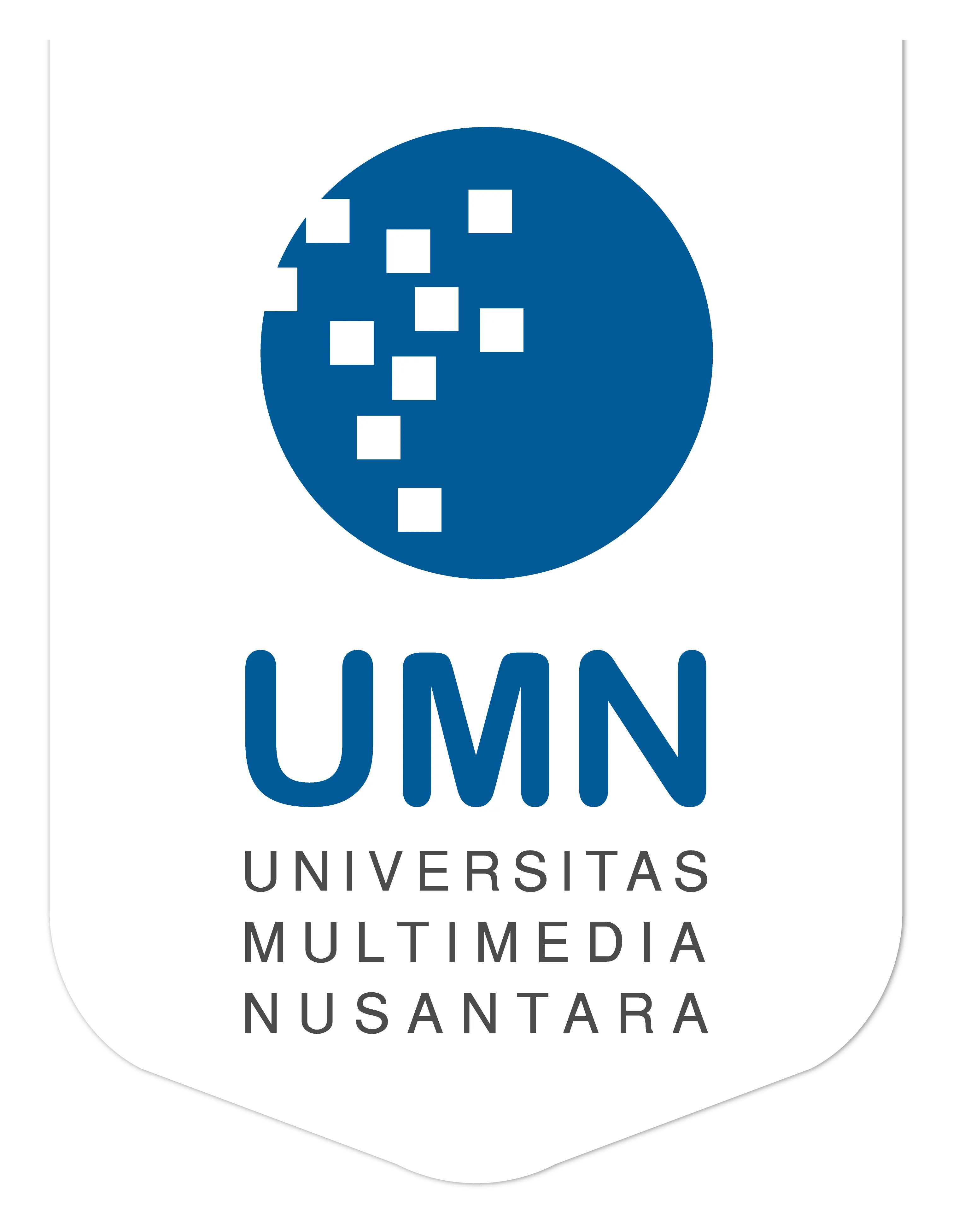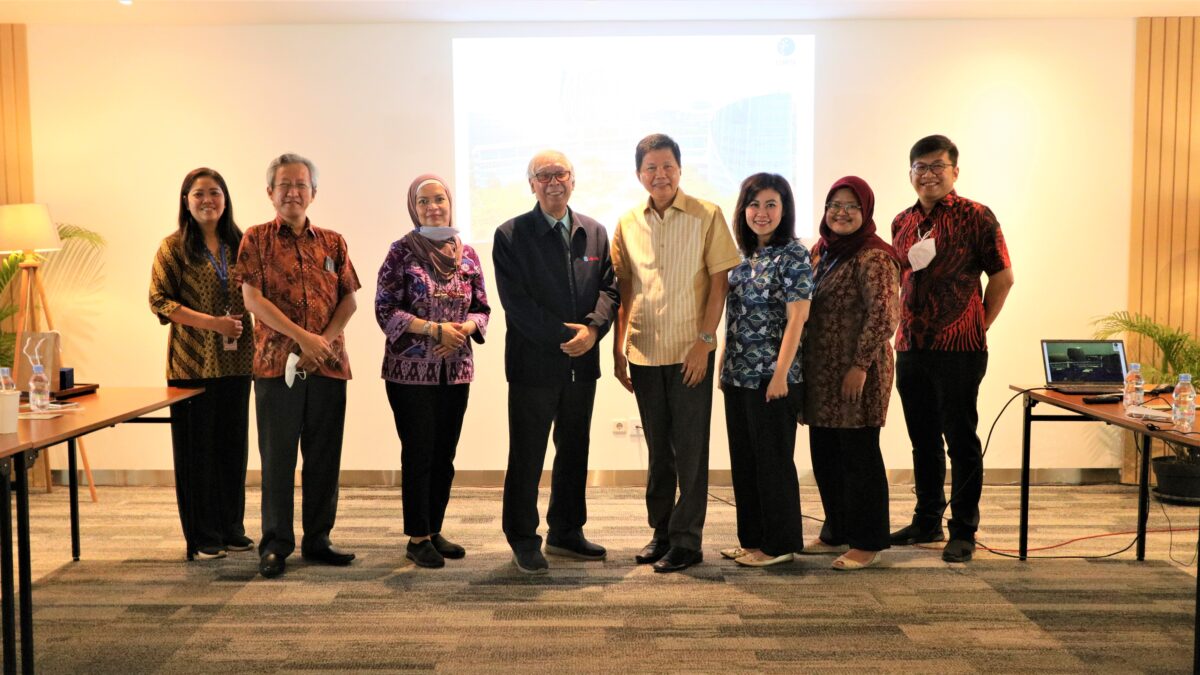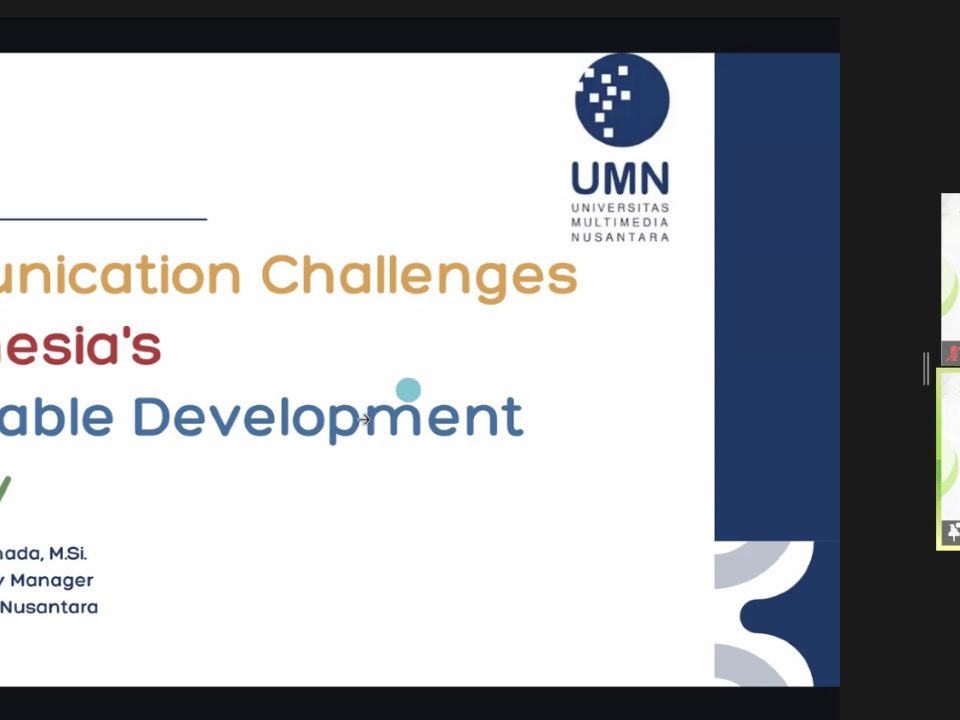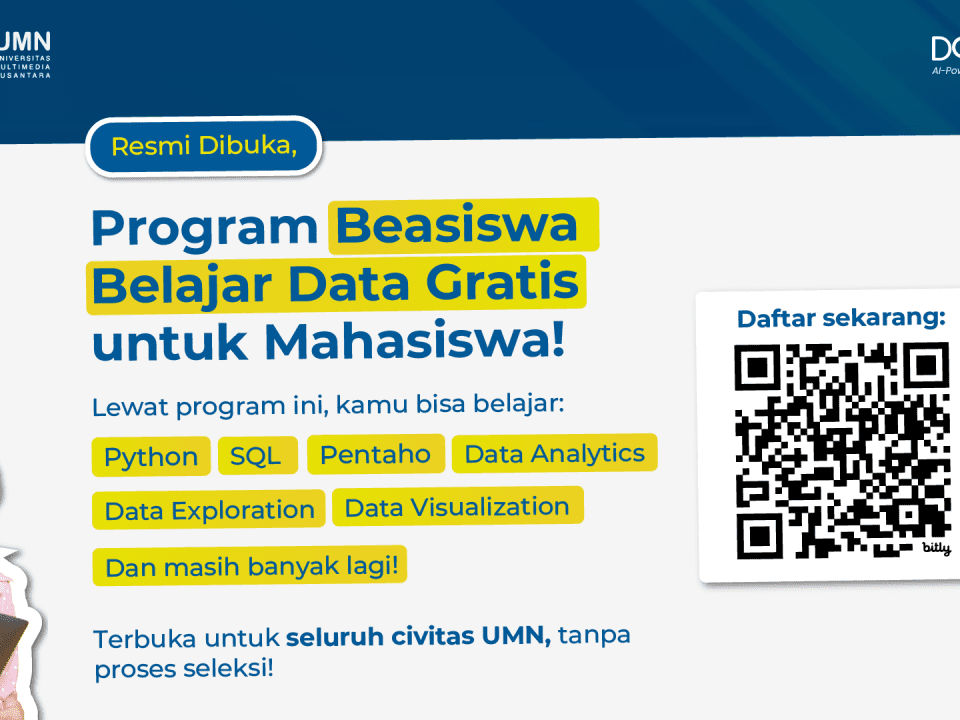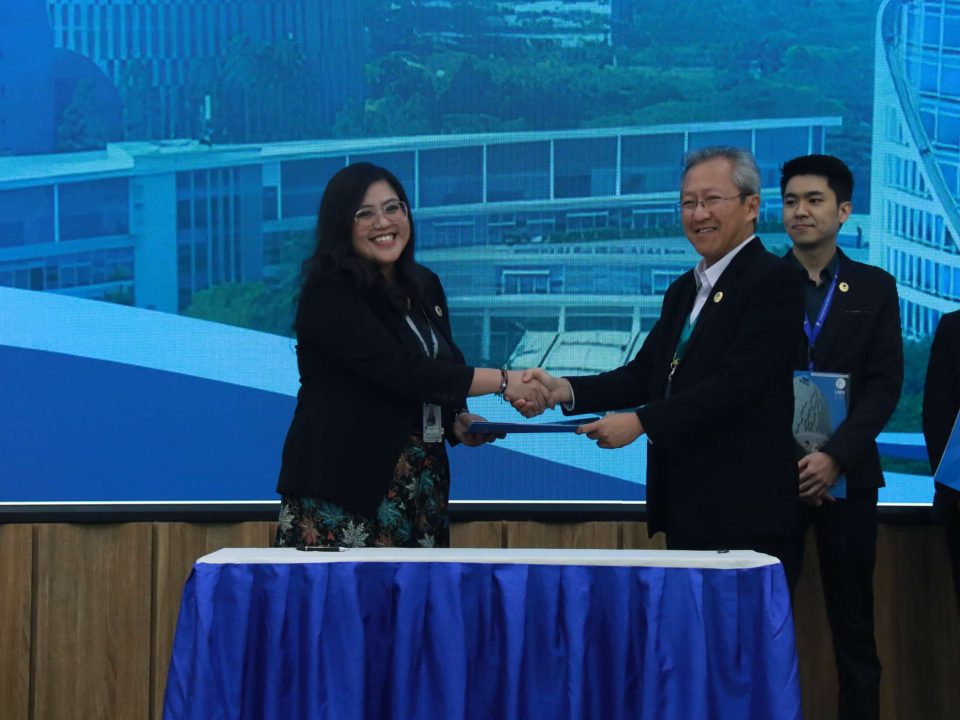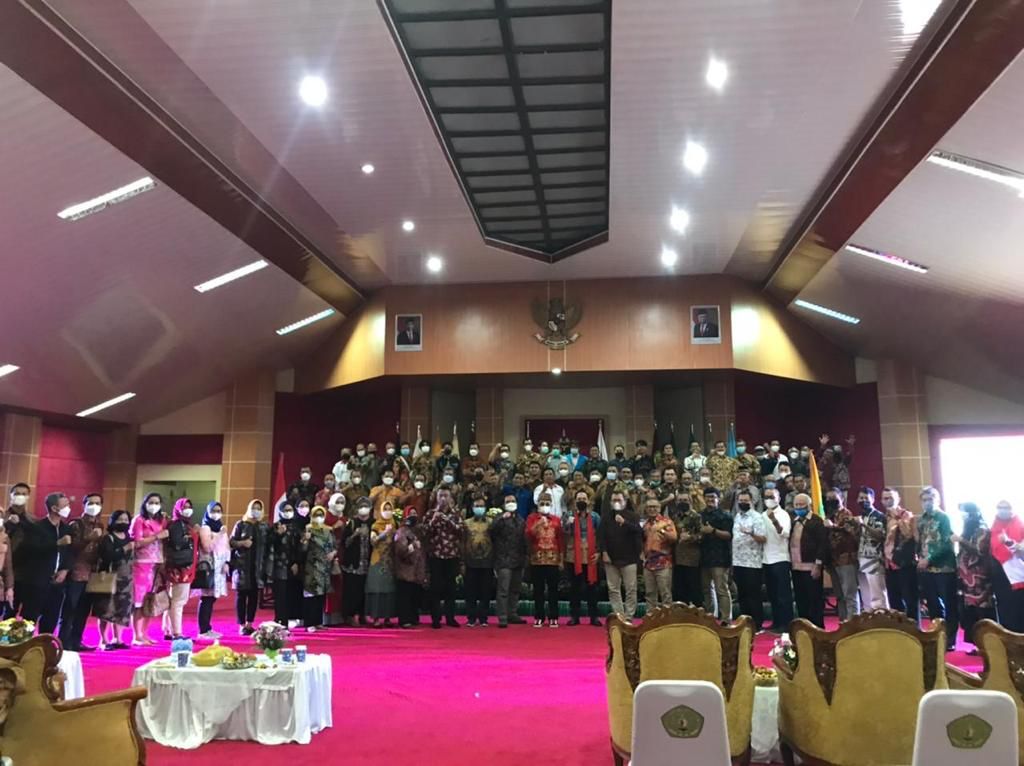
UMN Joins the 2022 National Community Service Program
April 7, 2022
UMN Pictures Launches New Game: FLICK!
April 8, 2022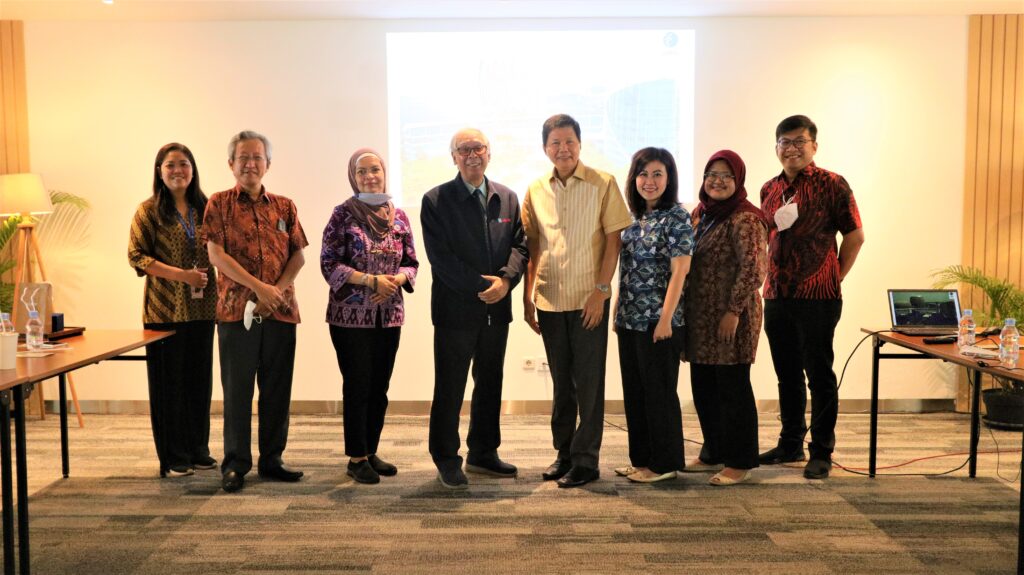
Multimedia Nusantara University (UMN) and Center Of System Institution (dok. UMN)
TANGERANG – Multimedia Nusantara University (UMN) and the Center of System Institution, a research institution in the logistics sector, made a joint presentation to open up the possibility of future collaborations. The presentation was held on Wednesday (30/3) at the UMN Campus.
The session was attended by Teddy Surianto, the Chairman of the Multimedia Nusantara Foundation, and a number of UMN leaders. It was also attended by the guest representatives of the Center of System Institution, namely Eriyatno and Liesa Larasati, the Director of the Center Of System Institution. They are engaged in consulting, advocacy, and research action.
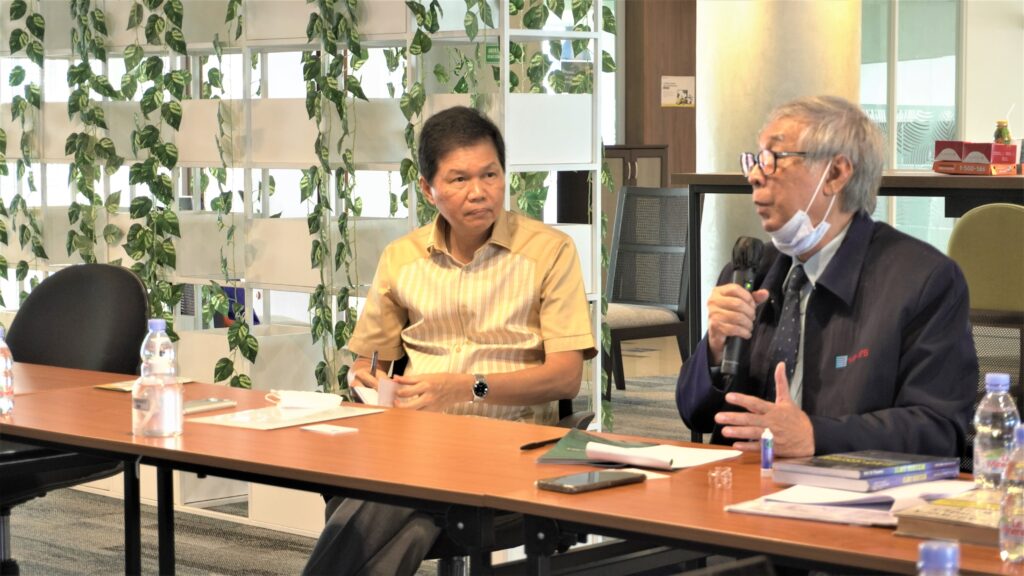
Teddy Surianto with Prof. Dr. Ir. Eriyatno, MSAE (dok. UMN)
Before starting the joint presentation session, the Center Of System representatives were invited to check out the facilities and infrastructures on the UMN campus. This includes Skystar Ventures, UMN’s business incubator, also used as the meeting room for the joint presentation.
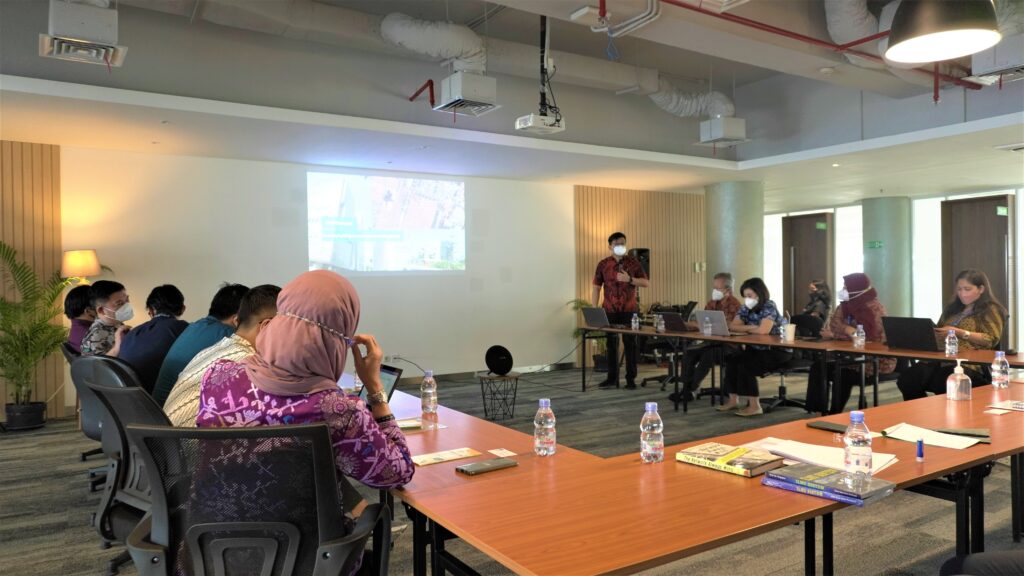
Multimedia Nusantara Polytechnic Director, Roy Anthonius Susanto (dok.UMN)
This meeting between two parties is not exactly new. In Teddy’s opening remarks, he shared that Eriyatno, often called Prof. Eri, was a systems expert and also his supervisor in 1982. Teddy then shared that the Multimedia Nusantara Foundation has two academies, namely Multimedia Nusantara University (UMN) and Multimedia Nusantara Polytechnic (MNP).
Also read Inauguration of Multimedia Nusantara Polytechnic: Collaboration for Indonesian Vocational
Following up on Teddy’s remarks, Roy Anthonius Susanto, the Director of MNP, presented a video profile and introduction about MNP. Roy explained that this polytechnic was newly established on September 18, 2021. Despite so, MNP already has three excellent study programs, namely Digital Animation, Event Management, and E-commerce Logistics. MNP graduates will also have an Applied bachelor’s predicate, equivalent to an academic bachelor’s degree. The only difference is that MNP applies project-based learning (70% practice and 30% theory).
Eriyatno then continued the presentation. He opened the presentation with a short story. Statistical science was only called data in the past, but now there is indeed a science. He also briefly shared his experience visiting Columbia University in New York. There, he saw the presence of a new science called data science.
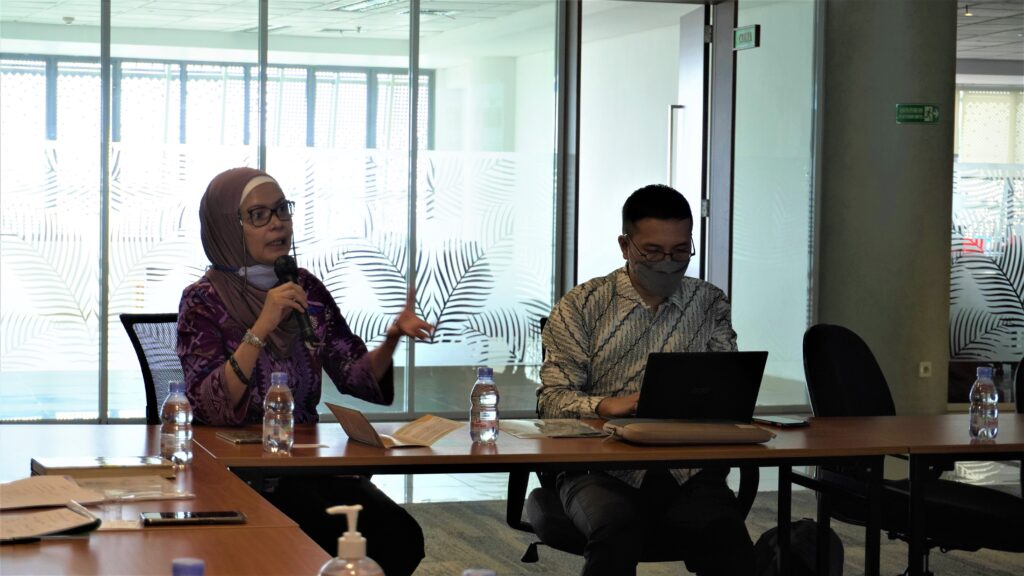
Liesa Larasati, Center Of System Director (dok. UMN)
Adding to Eriyatno’s presentation, Liesa said that the Center of System is a non-profit institution. But, they have permits and more to conduct consultations, advocacy, and action research.
The Center Of System institution leads a group of people (academics, business, community, government, and law) interested in applying systems science to their problems. In addition, the Center Of System is also the most active assisting in agriculture. Such as assisting in monitoring convections and the preparation of infrastructure for farmers and MSMEs, together with the government. The cooperation of the Center of System Institution has also reached the ASEAN region, whether it is cooperation with agencies, businesses, governments, and universities.
For approximately one hour, Eriyatno then discussed systems science and logistics. “System science is a marriage between engineering and social science,” Eriyanto said, explaining system science.
Eriyatno also explained that the field of systems science in Indonesia is tricky because its implementation requires human resources (HR) with a high level of engineering intelligence, not to mention the use of algorithms and Artificial Intelligence program technology which is not easy.
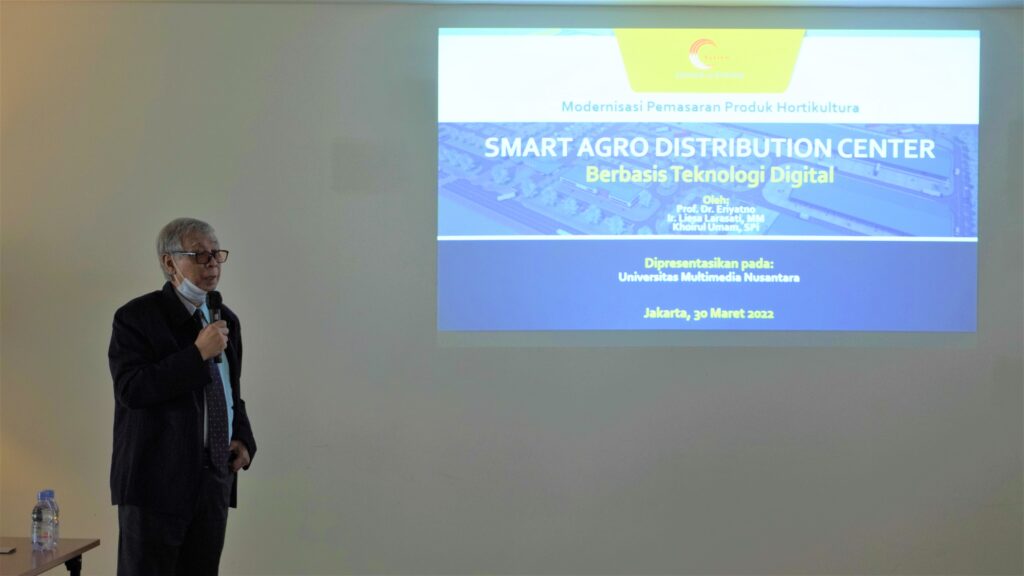
Prof. Dr. Ir. Eriyatno, MSAE from Center Of System Institution ( dok. UMN)
Based on this, Eriyatno and the Center of System Institution tried to build systems science platforms at universities. He also added that if systems science could be continued and developed at UMN, perhaps the Center of System and UMN could do some knowledge sharing and collaboration in research schemes through the independent campus program.
Eriyanto continued explaining logistics. He gave an example from the field of agricultural business that the Center Of System is handling. His presentation showed a map of farmers and consumers on opposite sides, showing a logistics line in the middle. However, he added that in the map, the problem is that the logistics line in the middle is left unattended.
Also read UMN and Kemuning Village Collaborate to Build a Smart Village
“As a result, there are a lot of losses, prices fluctuate, chilies are crushed, the cooking oil problem, and so on. Therefore, we need an Agro Logistic Center for smart distribution,” Eriyatno said.
“Whatever happens in our agricultural business concept, the ones who are most likely to be satisfied are the ones in the middle. The goods have high prices, and the farmers can’t get anything,” Eriyatno said. In short, it can be said that the existence of the Agro Logistic Center will later uphold the justice of agricultural trade and can help create jobs and increase farmers’ income.
Currently, in Indonesia, there is no Agro Logistic Center. However, the Center of System parties is carrying out an Agro Logistic Center project in Bogor and Banyuwangi. Although this project is still in the planning process, Eriyatno gave an opportunity to UMN if interested in conducting a field study there.
“Now that’s what’s important is the network. That’s what will make a company, university, or public institution to be prominent. It’s the network. To make the company adaptive, it is necessary to run a good network of collaborative relationships. The network always wins,” Eriyatno concluded.
*by Iglo Montana | UMN News Service
Kuliah di Jakarta untuk jurusan program studi Informatika| Sistem Informasi | Teknik Komputer | Teknik Elektro | Teknik Fisika | Akuntansi | Manajemen| Komunikasi Strategis | Jurnalistik | Desain Komunikasi Visual | Film dan Animasi | Arsitektur | D3 Perhotelan | International Program, di Universitas Multimedia Nusantara. www.umn.ac.id
